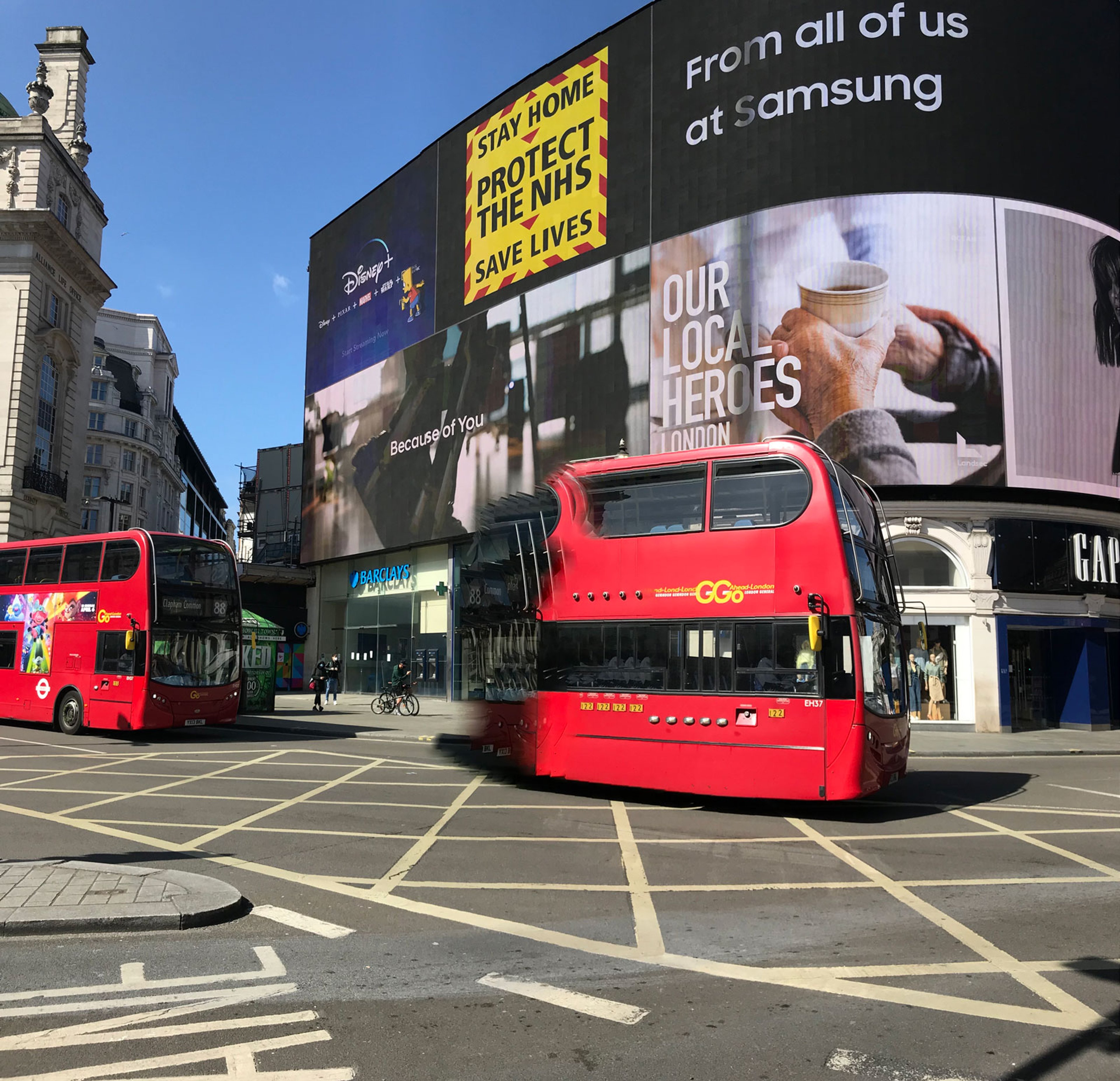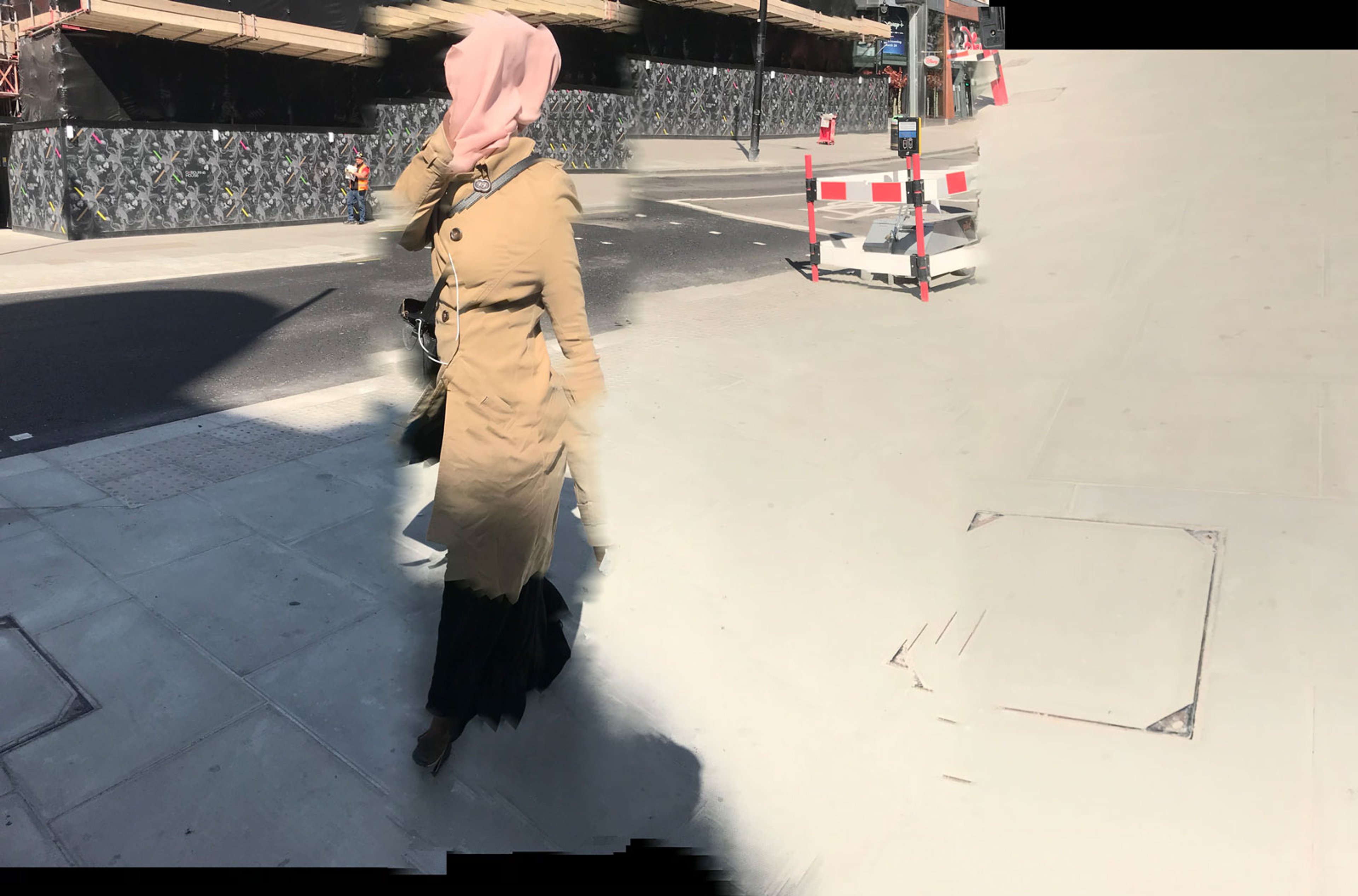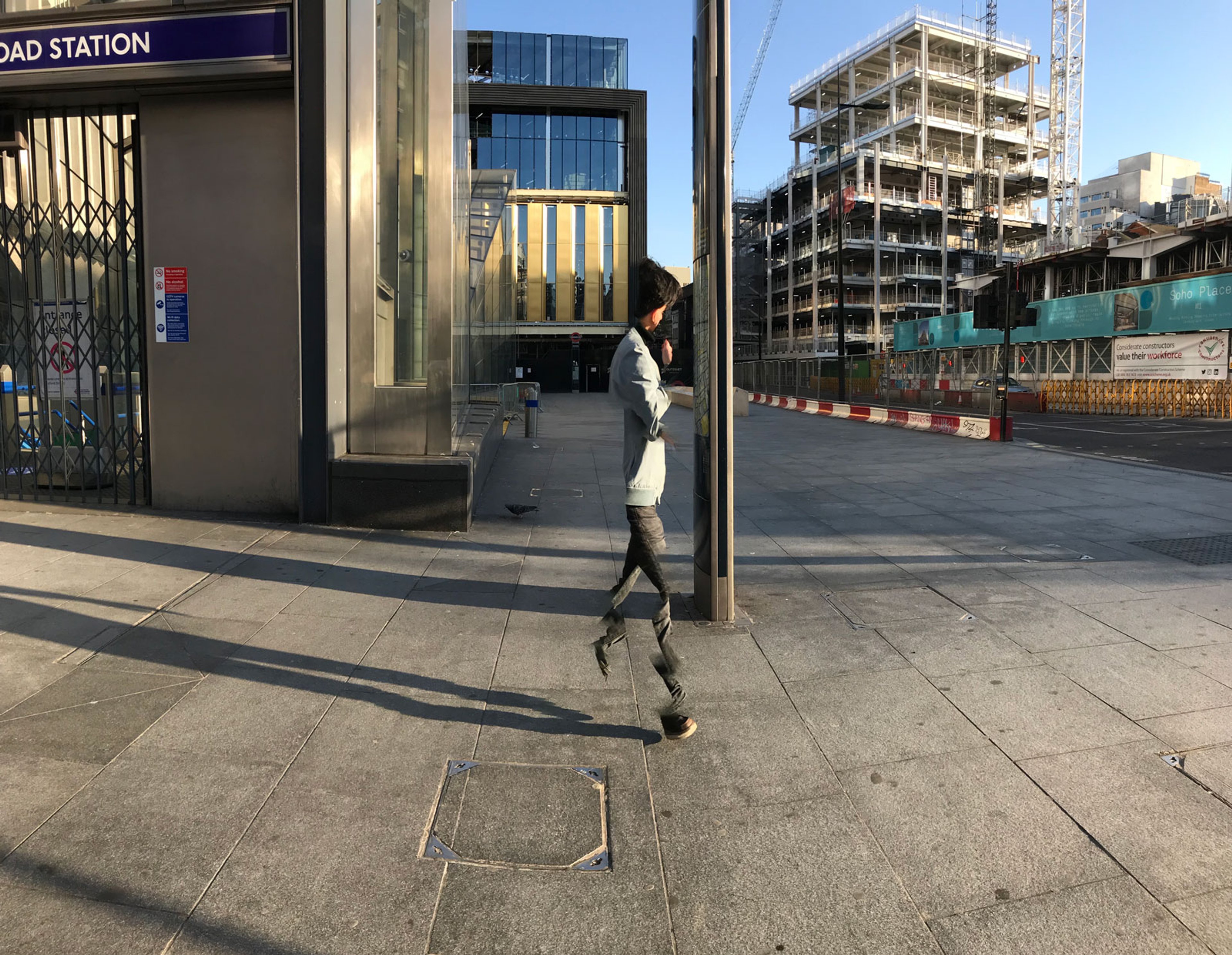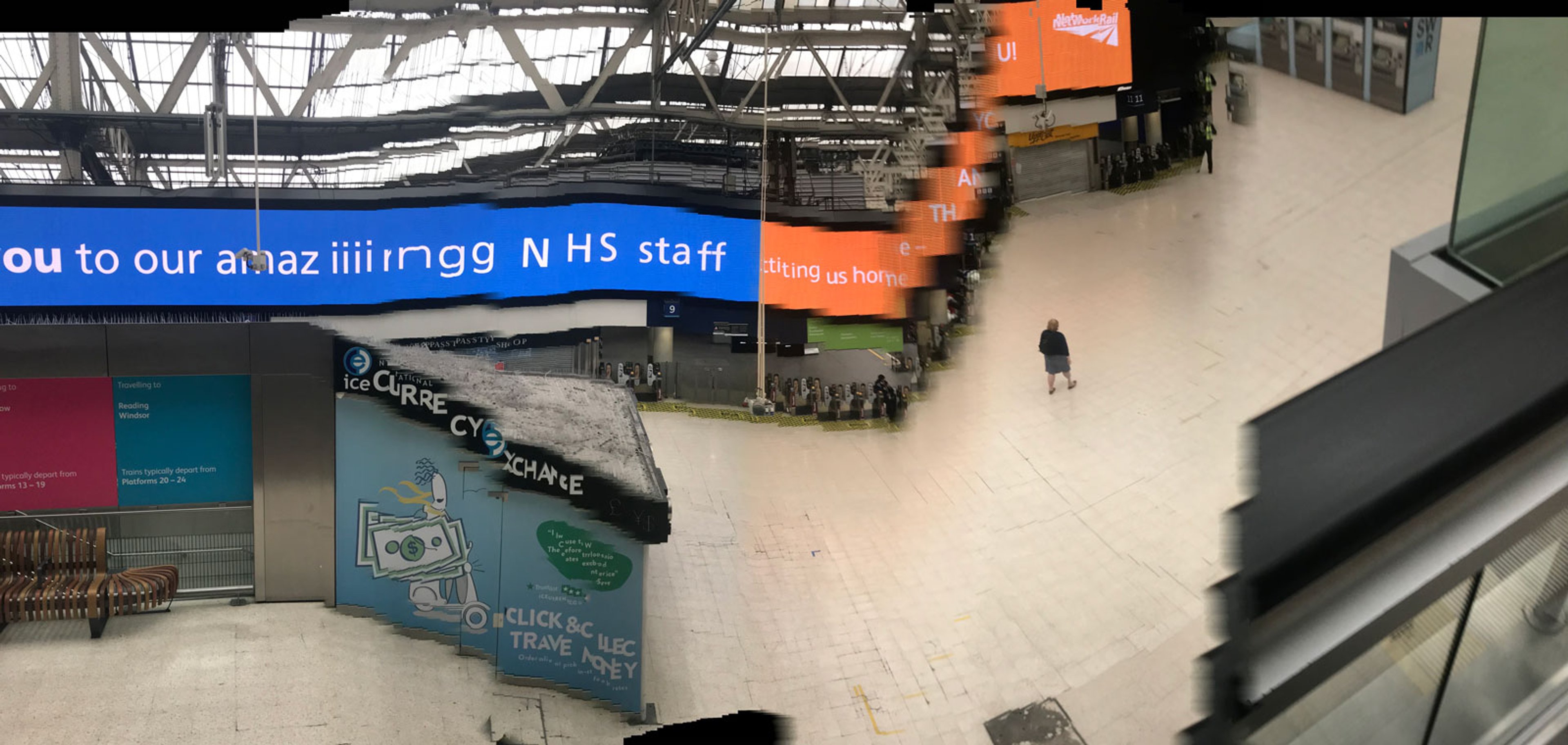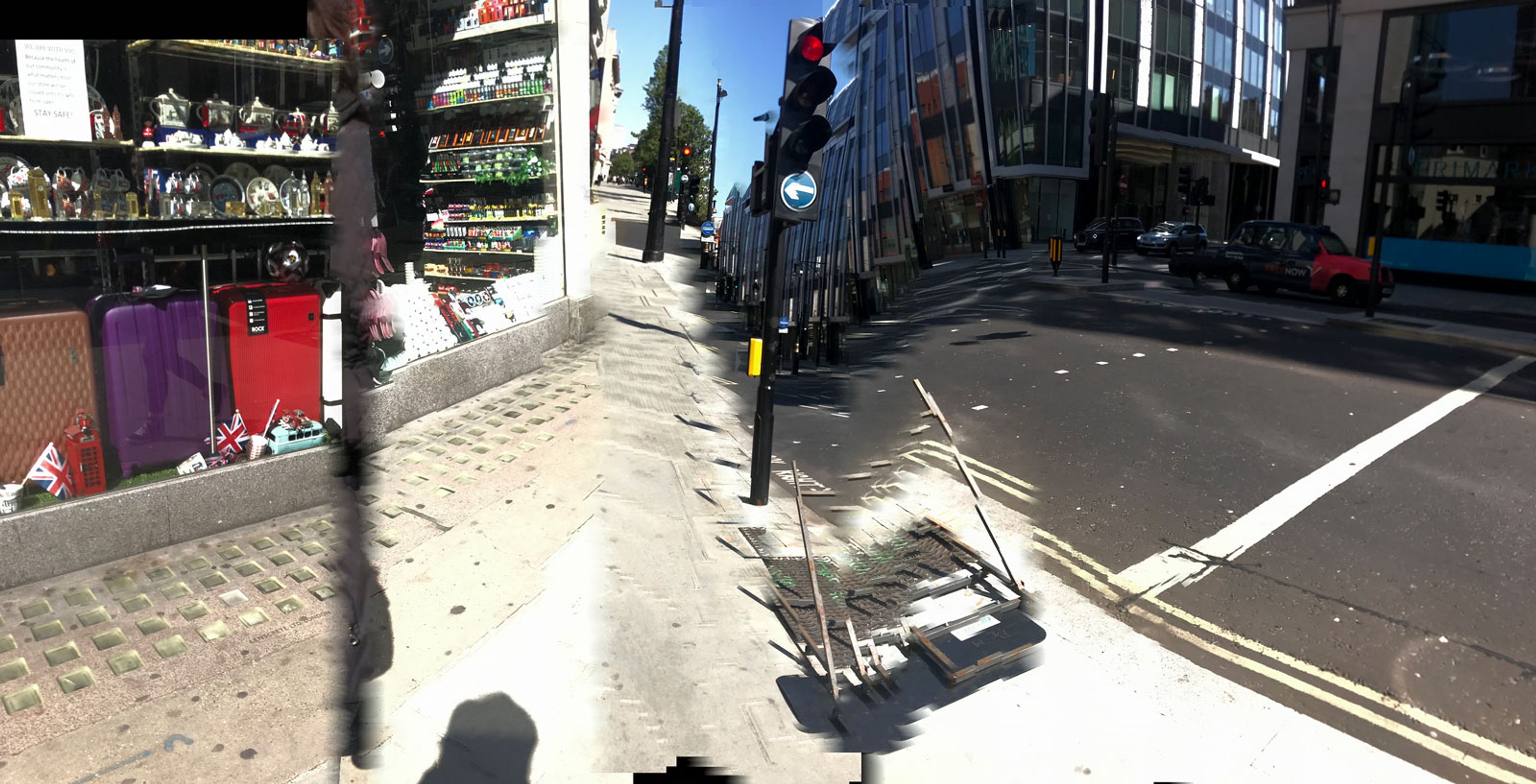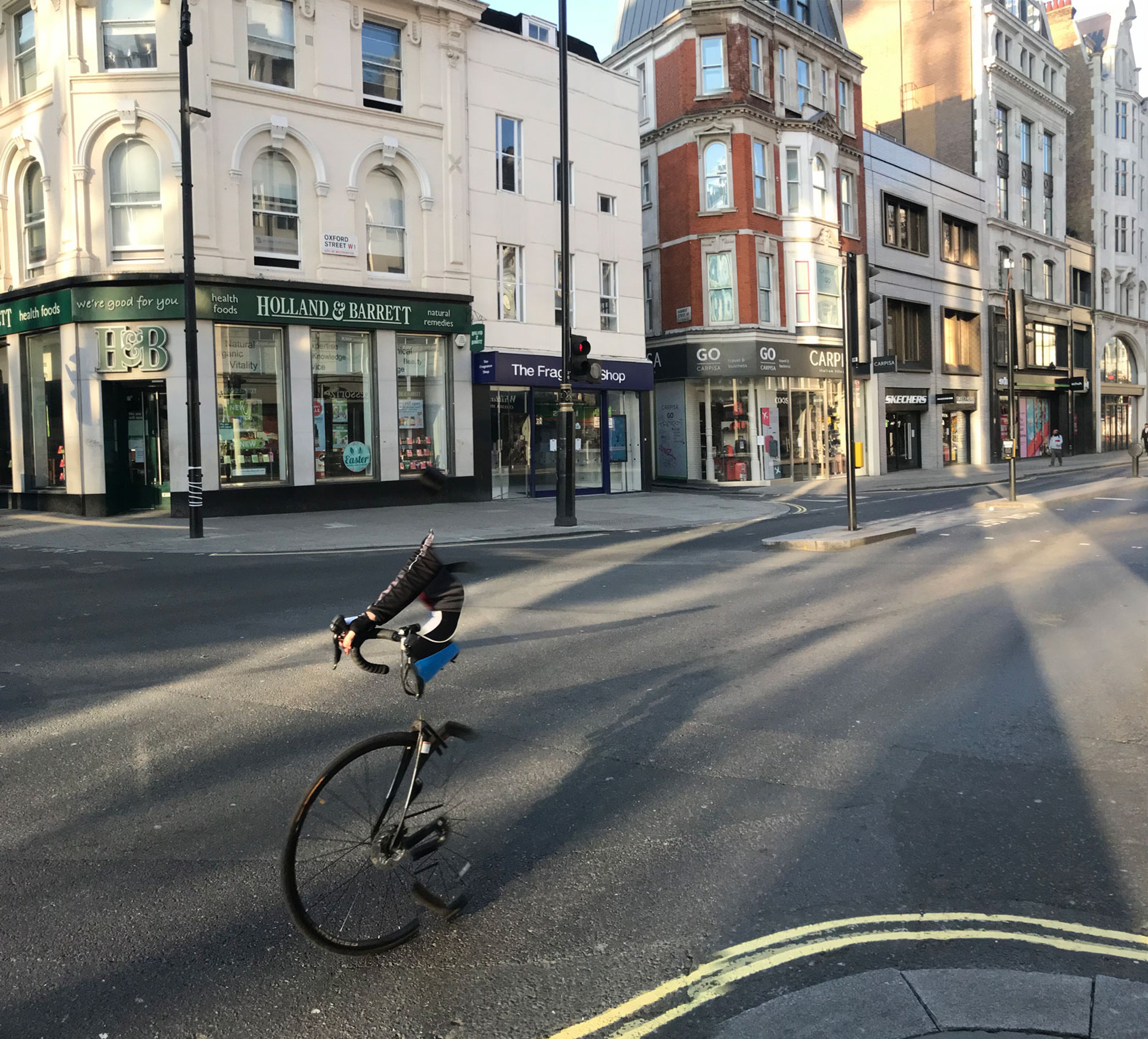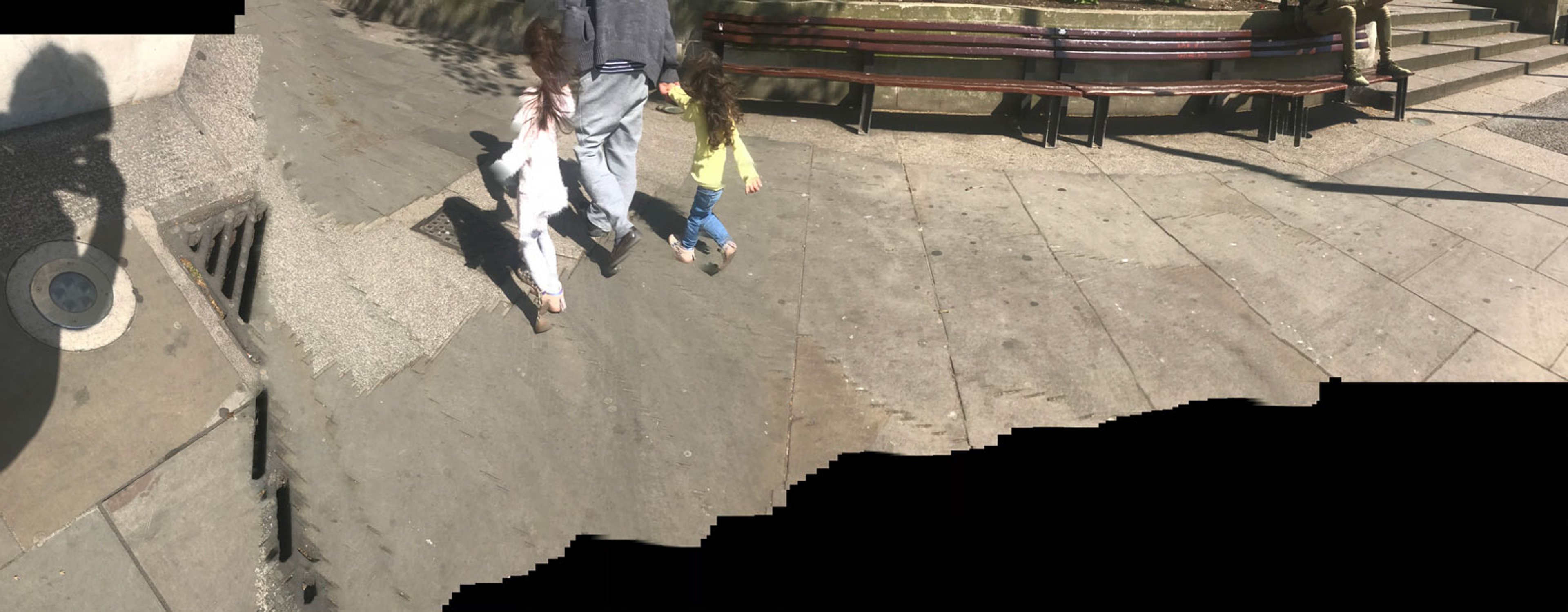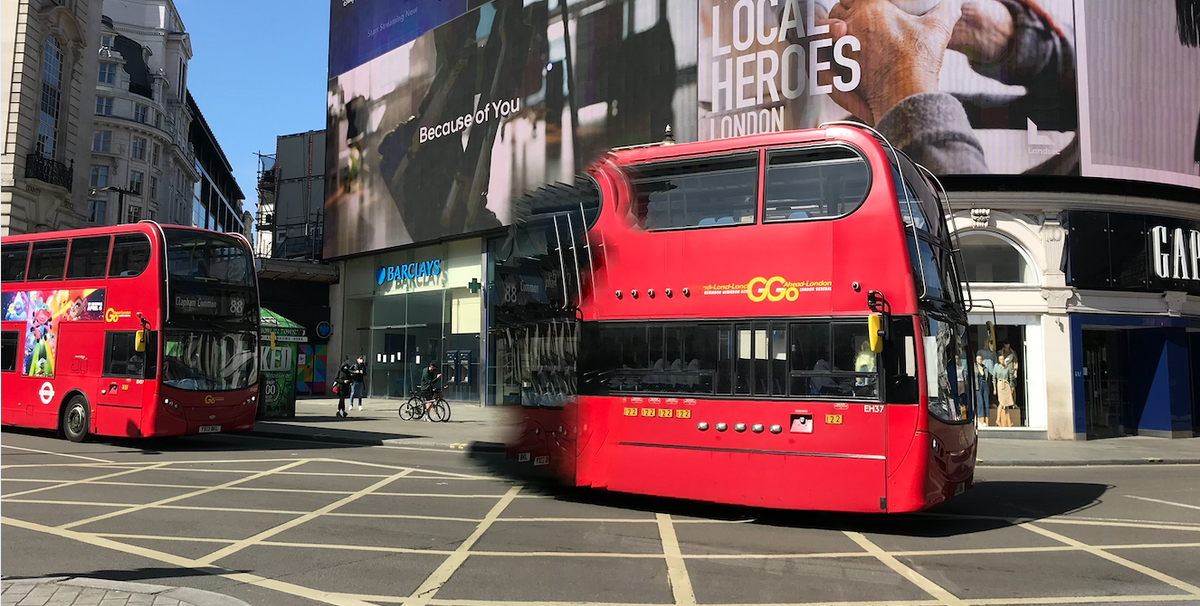The deserted streets of central London under lockdown have prompted the British artist Mark Wallinger to begin a new body of work. While on his daily exercise walks from his flat in London’s Soho he has been photographing the capital’s landmark commercial and tourist locations, using the basic settings on his iPhone to capture haunting panoramas of familiar but now transformed places. These are unveiled for the first time in The Art Newspaper, along with a short poem (below) also triggered by his experience of lockdown London. “All the furious purpose that happens in the city has been emptied out—everything has become a weird distillation of itself,” he says. “I feel like I’m trying to get to grips with something—it’s very far off from being a flaneur, but in a sense that’s what I’m doing.”
The series began with a single image snapped in Trafalgar Square on Easter Sunday. “I took this wide panoramic shot—and when I looked at it later there was a whizzing cyclist captured in it,” Wallinger remembers. “It had something of those Ideal City Renaissance paintings with this little bit of [Umberto] Boccioni or [Giacomo] Balla dropped in—and that struck me as capturing something about this strangeness that we are now living in.”
In Wallinger’s new photographs, Oxford Street, Holborn, the British Museum, Waterloo Station and Piccadilly Circus are bathed in brilliant sunlight but emptied of their usual teeming crowds and further unsettled by disquietingly distorted details. Solitary human figures simultaneously appear and disappear, vanishing into space like apparitions. A cyclist dematerialises into a fragment of front wheel and trailing shadow, the railings outside the British Museum repeat into a relentless row of bars, while the back end of a bus evaporates into nothingness.
Wallinger has captured his urban wanderings before: nine years ago he shot his shadow walking and dipping and diving through the same streets that he is shooting now; and on another occasion he taped his iPhone to the window of his car to make a whirling film of an oak tree at the centre of the Essex roundabout that he used to circumnavigate while learning how to drive. These new walks with the phone that he describes as “such a tremendous democratic tool” are part of his daily life but just as nobody knows how long the current crisis will endure, so Wallinger has no idea how long he will go on making these photographs or what form they will ultimately take. For now, they exist only as digital images, and he’s happy with that. “I don't know how they will ultimately manifest themselves” he says. “Perhaps the fact that they have no substance at the moment says something of where we are at.”
‘I saw him’ by Mark Wallinger
I saw him, I am sure I saw
Him pass me in an empty bus
I mean he looked the same
But young, like I’d known him before
The name is on the tip of my


